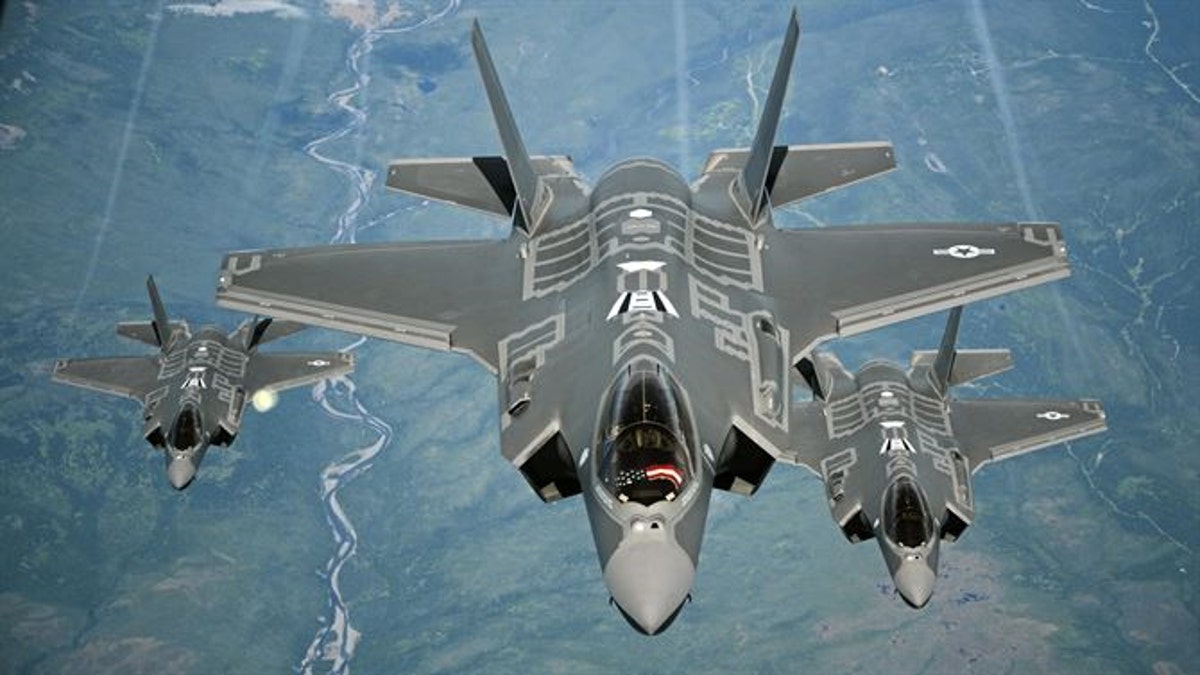
F-35A Lightning II aircraft receive fuel from a KC-10 Extender from Travis Air Force Base, Calif., July 13, 2015, during a flight from England to the U.S. (U.S. Air Force photo/Staff Sgt. Madelyn Brown)
The Air Force is now massively speeding up development for hypersonic weapons, missile warning systems and F-35 upgrades as key parts of an emerging new strategy emphasizing risk taking, prototyping and experimentation early in the acquisition process.
The service is now accelerating a plan to speed up delivery of new missile warning satellites, push the arrival of hypersonic weapons forward several years and more rapidly cycle in F-35 software upgrades to keep pace with new challenges.
“Do not be afraid to be aggressive. Sow reasonable prototyping early into your program,” Dr. Will Roper, Assistant Secretary of the Air Force for Acquisition, Technology and Logistics, told a group of reporters about his message to service weapons developers.
Roper said that over the last 15 years of counterinsurgency warfare, the service dropped off from what was a previous Cold War emphasis upon large-platform related prototyping to instead look for new technology to fight terrorists. The result, he explained, was a lessening of a more linear or impactful relationship between the Science and Technology community and near-term weapons developers.
“We became accustomed to there not being a bridge between S&T and programs of record. I am looking for S&T that is ready,” Roper said.
Chinese and Russian space weapons threats seem to inform the current push to rev up deployment of new missile warning satellites. The Air Force had been planning to buy several more of its existing Spaced Based Infrared System satellites but has instead massively shortened the timeframe to acquire its new, high tech Overhead Persistent Infrared (OPIR) within five years instead of nine.
The new satellites are being engineered with greater resilience to enemy attacks through cyber hardening, smaller, less vulnerable form factors and jam-resistant GPS systems. The service plans for the new systems to be operational by 2023.
“The Air Force is transitioning to rapidly developing the OPIR system, which will detect and report on current, emerging and anticipated threats,” Maj. William Russell, Air Force spokesman, told Warrior Maven.
Roper said the OPIR program is an important benchmark effort for the new strategy, citing current accelerated sensor prototyping of the new systems.
Satellites with longer-range sensors are needed to facilitate important elements of the Air Force’s new Space War Strategy which, among other things, calls for less condensed or more dis-aggregated space assets as a way to limit exposure to enemy attacks. Operating satellites at greater distances from one another, as a mechanism to reduce vulnerability, naturally requires stronger and longer-range networking connectivity.
“We want to balance the need to deliver on a certain timeline with a reasonable amount of experimentation and prototyping,” Roper said.
Speeding up software upgrades for large platforms like the F-22 and F-35, Roper said, could mean the difference between winning and losing wars. New software applications, which can often emerge within days instead of years other systems may require, brings a need for what the Air Force calls “agile acquisition.” This involves a decided push to quickly “spiral in” new software as it becomes available. Hardware systems such as radar warning receivers, sensors, avionics and weapons systems can all change measurably in nearly real-time by virtue of the current pace of technological change.
“Software is our big issue. It is probably time to rethink whether the acquisition system used to buy things like submarines applies to software – which changes every day,” Roper said.
Given this scenario, the Air Force is now beginning special “pathfinder” programs for several of its F-35 component systems as a way to assess rapid software integration. Roper specifically cited the F-35s Automated Logistics Information System on board computer and Mission Data Files threat library data base as areas of exploration for the pathfinder effort.
The goal, Roper added, is to improve the F-35 on the fastest possible timeframe – and not have to wait for longer-term software increments or “drops.”
“The real challenge is to show we can pivot to having software drops that happen all the time. In the future we could be changing software every day as a necessary factor for winning. Software will be the delineator,” Roper said.
